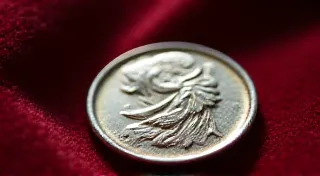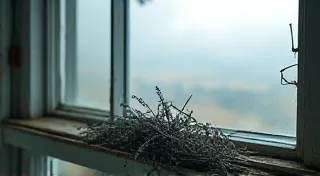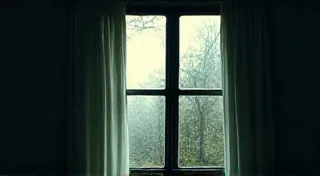The Silent Dialogue: How Antique Cameras Reflect the Social Norms of Their Time
There’s a peculiar intimacy that arises when handling an antique film camera. It’s more than just the feel of cool metal and leather in your hands; it’s a visceral connection to a bygone era. These aren't just boxes that capture light; they've been silent witnesses to history, their design and marketing deeply interwoven with the social fabric of the time they were created. Restoring them isn’t simply about fixing mechanics; it’s about unveiling a cultural artifact and listening to the “silent dialogue” it holds.
I remember the first time I truly understood this. I was a young boy, helping my grandfather sort through his belongings after he’s passed. He was a history teacher, always brimming with stories and a love for the tangible past. Among the dusty boxes, I unearthed a Kodak Brownie box camera, circa 1905. Its simple, boxy form, so unassuming, held an unexpected resonance. Holding it felt like holding a piece of my grandfather's memory, a tangible link to a time he's always described – a time of rapid change and burgeoning middle-class aspirations.
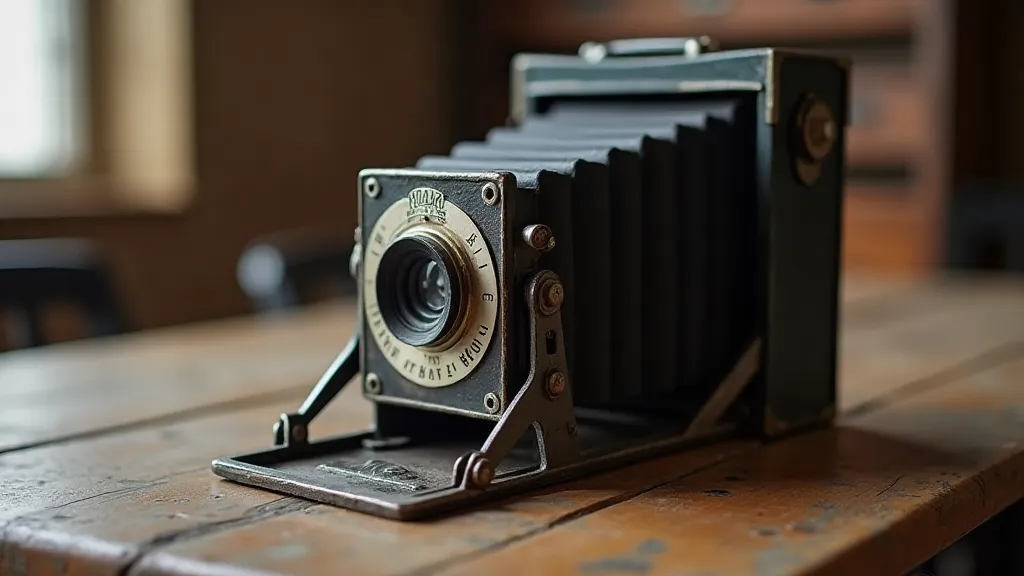
The Camera as a Symbol of Democratization
The Kodak Brownie’s arrival in 1900 was revolutionary. Before that, photography was largely the domain of professionals and the wealthy. Cameras were complex, required extensive knowledge of chemistry and optics, and involved tedious processes. George Eastman, the visionary behind Kodak, understood that to truly democratize photography, you needed to make it accessible to everyone. The Brownie’s slogan, "You press the button, we do the rest," wasn't just a marketing gimmick; it represented a profound shift in social values. It promised a world where anyone, regardless of their background or technical expertise, could capture memories and participate in visual storytelling.
This accessibility reflected the burgeoning middle class of the early 20th century. Increased leisure time and disposable income meant more people could afford not just the camera itself, but also the film and the developing process – or, increasingly, the developing service offered by Kodak. The camera became a symbol of this newfound prosperity and the desire to document one's place in a rapidly changing world. Family portraits, vacations, and everyday life were all captured and shared, creating a visual record of a generation. The evolution of photographic technology during this period wasn’s solely about technical innovation; it was deeply intertwined with the changing aesthetics of image creation. Consider the artistic exploration of image imperfections – the deliberate embrace of light leaks and other “flaws.” This approach, a counterpoint to the pursuit of clinical perfection, finds echoes in modern film photography and the artistic choices explored in the language of light leaks.
Form and Function: Reflecting Aesthetic Ideals
Beyond mere functionality, the design of antique cameras reveals the prevailing aesthetic ideals of their time. Early cameras, like Daguerreotypes and Calotypes, were often ornate and meticulously crafted, reflecting the Victorian era’s fascination with detail and craftsmanship. The use of precious metals, intricate engravings, and elaborate bellows systems demonstrated a commitment to beauty and artistry that would be considered extravagant by modern standards. These cameras were status symbols as much as photographic tools.
As technology advanced, the aesthetic shifted. The streamlined, utilitarian designs of the Art Deco era (1920s-1930s) influenced camera aesthetics, emphasizing clean lines, geometric shapes, and a sense of modernity. Companies like Leica embraced this aesthetic, creating compact, robust cameras that reflected the era’s fascination with speed, efficiency, and functional beauty. The focus moved from purely decorative elements to a more integrated approach where form and function were inextricably linked. Even the choice of materials – the type of leather used for the covering, the finish on the metal – were carefully considered to project a particular image of sophistication and reliability. The pursuit of efficiency also led to numerous designs that, while innovative for their time, ultimately proved impractical or were superseded by newer technologies. Examining these abandoned designs offers a fascinating glimpse into what might have been – a realm of the shadow of innovation, where the future of photography unfolded in countless, unrealized paths.
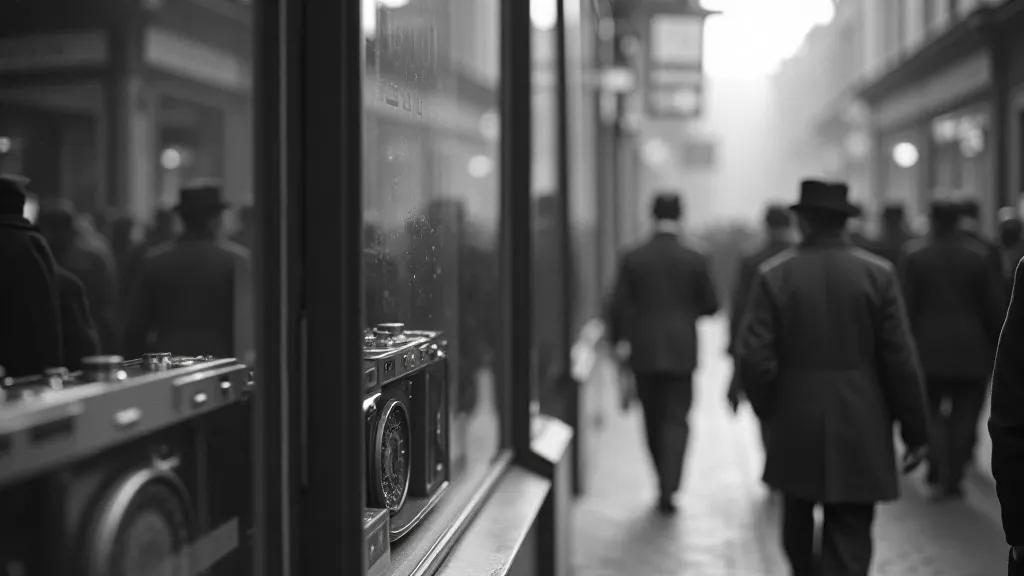
Marketing & Social Norms: A Delicate Dance
The marketing campaigns surrounding antique cameras provide an even more revealing insight into the social norms of the time. Early Kodak advertisements often targeted families, portraying the camera as a tool for preserving cherished memories and strengthening family bonds. The ideal family – wholesome, happy, and aspirational – was consistently portrayed, reinforcing the values of domesticity and traditional family structures. Marketing materials also played a crucial role in shaping perceptions of gender roles. Men were often depicted as the primary photographers, responsible for documenting family adventures and capturing "manly" pursuits, while women were more frequently shown as subjects being photographed.
The language used in advertising was carefully crafted to appeal to the desires and aspirations of the target audience. Words like “reliable,” “simple,” and “convenient” resonated with consumers seeking practicality and ease of use. The promise of capturing “precious moments” tapped into the growing desire for sentimentalism and the preservation of personal history. Analyzing these advertising campaigns is like reading a sociological study of the era, providing a nuanced understanding of the social values and expectations that shaped consumer behavior. The enduring power of photographic documentation also lies in its ability to bear witness to events and experiences. Examining vast archives of photographs, particularly those documenting historical moments or overlooked narratives, reveals a wealth of untold stories – a silent witness to the unfolding of history.
Restoration as Historical Preservation
Restoring an antique camera isn’t just about replacing broken parts or cleaning away years of grime; it’s about preserving a piece of history. It's a labor of love, requiring patience, skill, and a deep appreciation for the craftsmanship that went into the original creation. The restoration process often reveals hidden details about the camera's history – faint inscriptions, remnants of original markings, traces of the environments it has witnessed. These discoveries deepen our connection to the past and provide valuable insights into the camera’s journey through time.
As a restorer, I strive to maintain the camera's integrity while ensuring its functionality. This means carefully researching original materials and techniques, and avoiding modifications that would compromise its historical value. It’s a delicate balance between preserving the patina of age and ensuring the camera can once again capture the beauty of the world. The longevity and functionality of antique cameras are also heavily dependent on the condition of their lenses. Regular maintenance, including careful cleaning and lubrication, is essential to preserving image quality. The intricacies of this process are explored in detail in cleaning and lubricating vintage camera lenses.
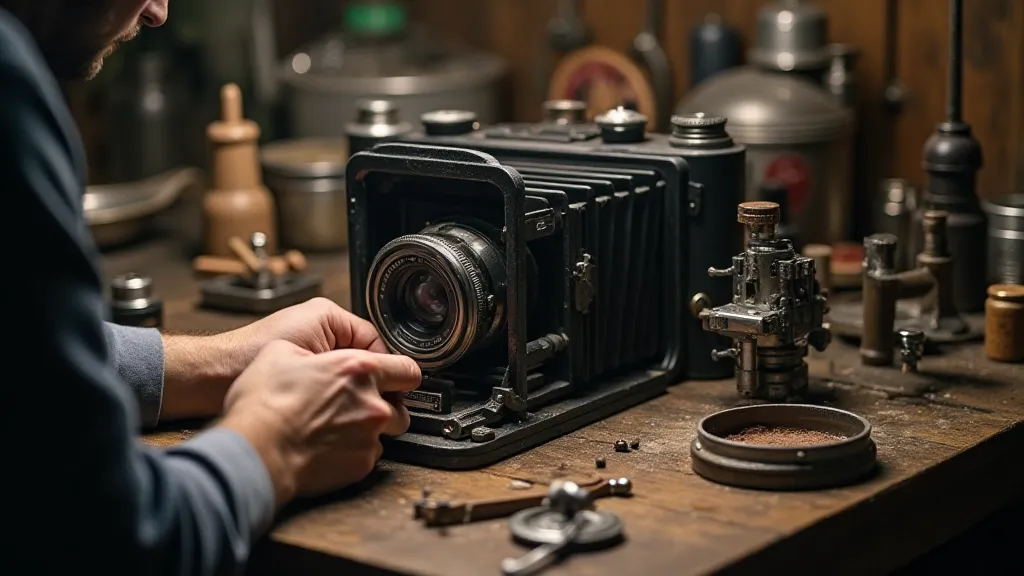
Ultimately, restoring antique cameras is more than just a technical skill; it's a form of cultural preservation. By bringing these silent witnesses to the past back to life, we ensure that their stories continue to be told, and that future generations can appreciate the beauty and ingenuity of a bygone era. Holding an antique camera is holding a piece of that history, a tangible connection to the silent dialogue of a time long past. The historical context of these cameras extends beyond their design and marketing; it's interwoven with the social, economic, and technological forces that shaped the world around them. From the rise of consumerism to the changing role of women, antique cameras offer a unique lens through which to view the past. Their physical presence, the feel of their mechanisms, and the stories they hold continue to resonate with us, reminding us of the enduring power of human ingenuity and the enduring desire to capture the moments that define our lives. The enduring appeal of these cameras also lies in their ability to evoke a sense of nostalgia, transporting us back to a time when life moved at a different pace and the act of taking a photograph was a more deliberate and meaningful experience. It's a reminder that even as technology continues to advance, the fundamental human desire to connect with the past and preserve our memories remains constant. As custodians of these historical artifacts, we have a responsibility to ensure that their stories are passed on to future generations, allowing them to appreciate the beauty and ingenuity of the past while also learning from its lessons. The challenges of restoring these cameras are not merely technical; they are also ethical, requiring a deep respect for their historical significance and a commitment to preserving their authenticity for posterity.
